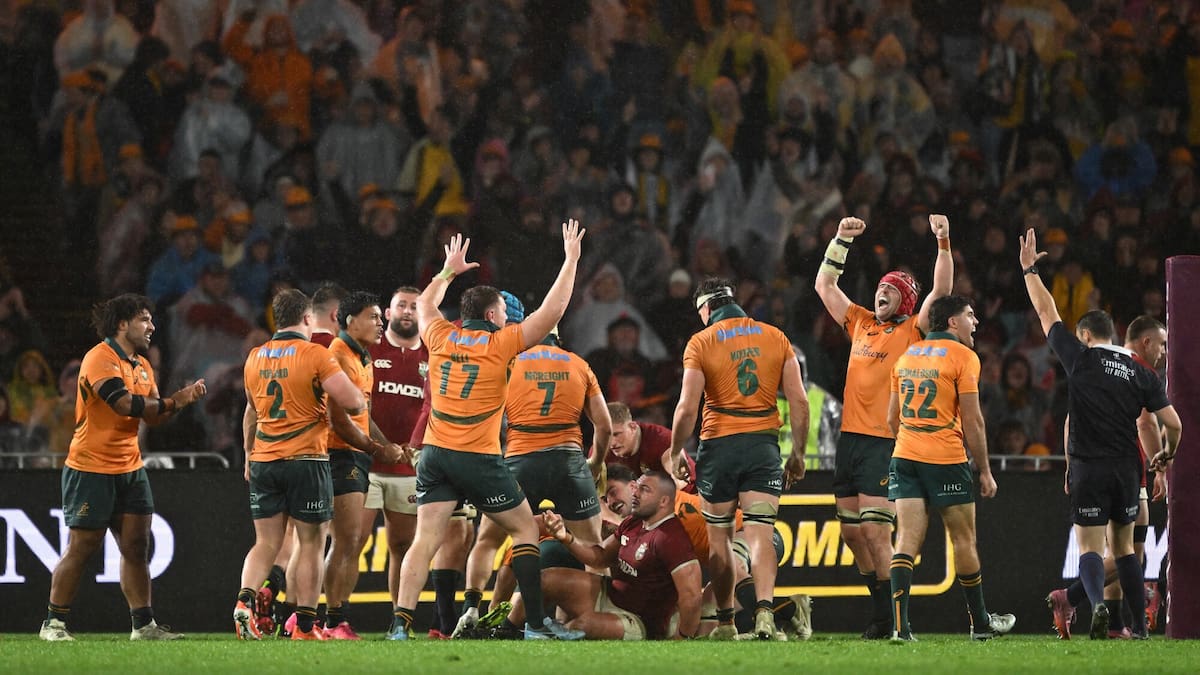The past six weeks or so have been one giant commercial flex by Australia, illustrating, through projection, the enormous difficulties New Zealand Rugby (NZR) faces commercialising the full potential of the All Blacks – the world’s best-known rugby brand – in a country of just five million people.
But the numbers tell a story that is much deeper than population discrepancy, and Australia monetised the Lions tour more effectively than New Zealand ever could, not just because it has almost six times as many people.
It has diversified its economy in a way agriculture- and tourism-reliant New Zealand hasn’t, and with a growing financial services and manufacturing base, Australia has significantly higher volumes of wealthy types to enable higher ticket pricing.
Australia sold 50% more tickets in 2025 than New Zealand managed in 2017, but it made 300% more profit – illustrating that it clearly took a significantly higher yield.
Some of this will be because Australia’s greater corporate horsepower means it can ramp up hospitality prices, knowing the Mossman set – the high financiers, hedge fund managers, property magnates – have the means and desire to pay, whereas in New Zealand, packages are tailored so they remain affordable to the small and medium enterprises that dominate the business landscape.
Australia is looking to attract the investment banking community, New Zealand is targeting the local car dealership.
Discover more
And the Australians had an enormous infrastructure advantage – playing games in stadiums (Perth, Adelaide, Sydney) – that have all either been built or majorly renovated in the past 10 years.
The highest individual attendance was 90,000 at the MCG, the lowest 23,000 in Canberra – with the average coming in at nearly 51,000.
It has been raining cash in Australia because it has supportive state governments that have seen the value in building stadiums and then spending again to attract major events.
This isn’t a populist move to appease sports fans to win votes, it’s a basic acceptance that the hospitality industry needs all the help it can get and that hotel beds need people sleeping in them.
Meanwhile, in New Zealand, the All Blacks are held hostage by political indecision, a seemingly crippling fear within sitting Governments to invest in infrastructure and a general Presbyterian strain of pettiness within the populace that sees the building of modern stadiums and the subsequent pursuit of attracting big events as some kind of moral failing and pathway to irretrievably frivolous lifestyles.
The Lions will come here in 2029 and NZR is unlikely to make a significantly larger profit than it did in 2017.
The only real difference will be that in 2029, the tour will have access to a new and larger (9,000 more seats than the existing temporary facility) stadium in Christchurch – but that’s not going to shift the dial, and unlike Australia, it is an unimaginable prospect that either the national Government or local authorities are going to start throwing cash around to try to attract fixtures.
This difference in attitude between New Zealand and Australia around government investment in events was further illustrated this week when Christchurch was announced as the host city of Super Rugby Pacific’s Super Round next year.
The Government contributed nothing – apparently reneging on a circa $1m commitment at the last minute. Whereas the Western Australian government has coughed up $5m to bring the Bledisloe Cup to Perth in October.
All this makes it at least understandable why NZR is increasingly looking to take the All Blacks offshore to lift its match-day revenue.
Last year, NZR made $32m in match-day revenue – but an estimated $5m of that came from playing a test at Twickenham against England, and another estimated $4m-$6m from playing tests in both Tokyo and San Diego.
The five domestic tests – two at Eden Park, two in Wellington and one in Dunedin – likely generated between $21m-$23m, a figure that compares with the estimated $22m that is generated by the Rugby Football Union from hosting a single test at Twickenham.
New Zealand is punitively small and poorly equipped when set against the commercial ambition of the All Blacks and if fixture allocation was viewed exclusively through a financial lens, the national team would play most of its home tests in Australia, the UK, Japan and the USA.
But of course, the view can’t be narrowed to that extent, and a raft of considerations come into the mix about where the national team should play, and because of that, the All Blacks may be a significantly more recognisable brand and a superior high-performance outfit to the Wallabies, but they not in the same league when it comes to making match-day money.
Gregor Paul is one of New Zealand’s most respected rugby writers and columnists. He has won multiple awards for journalism and written several books about sport.
